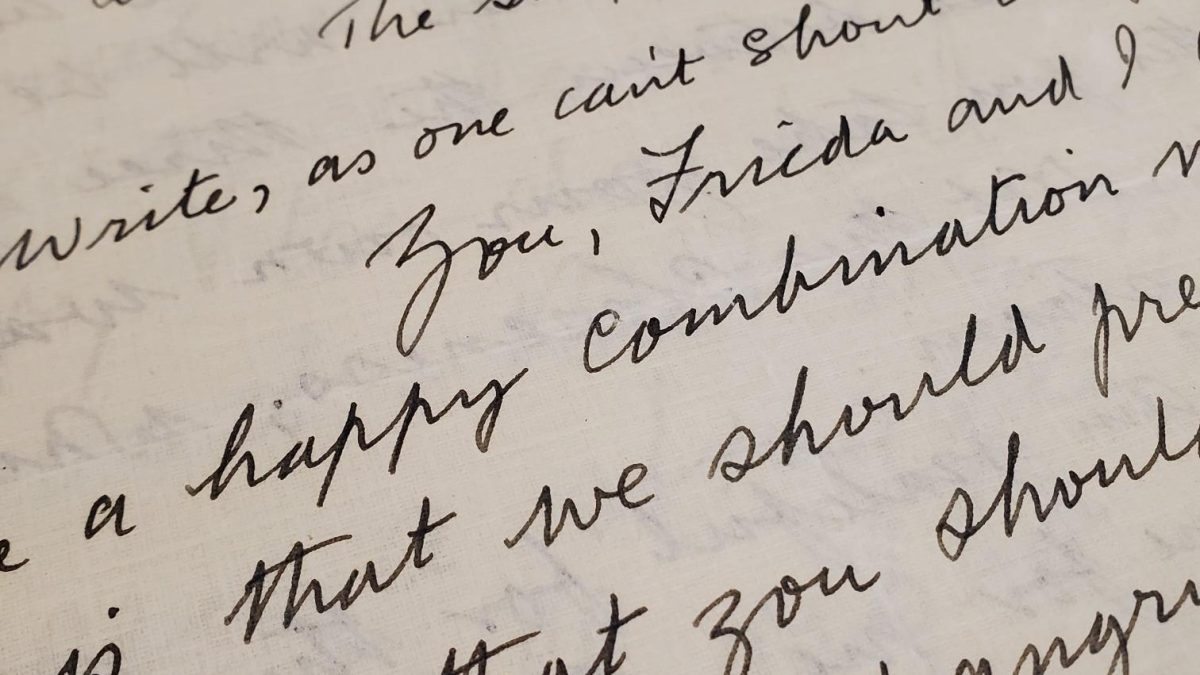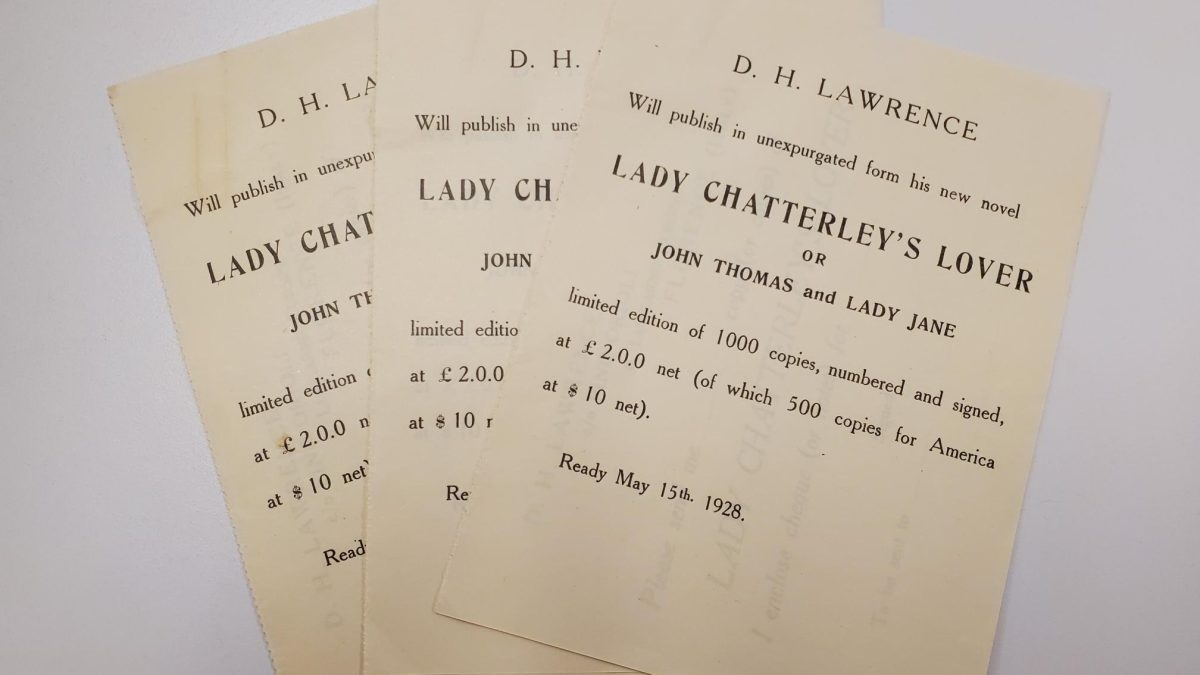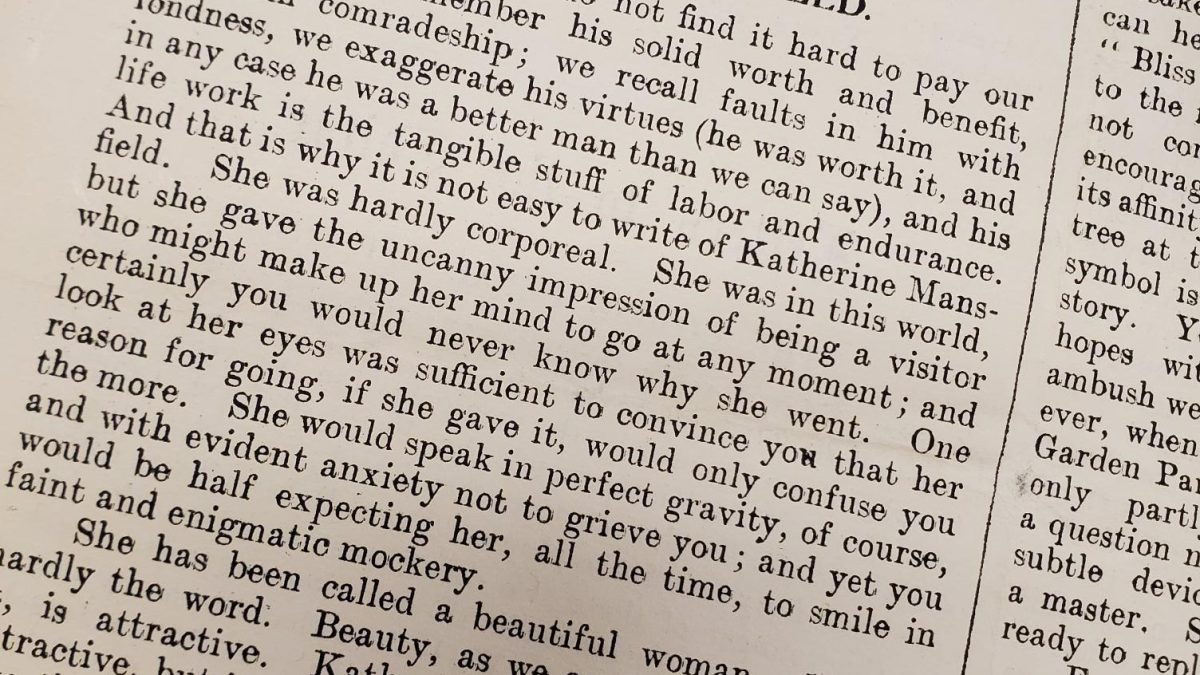“You, Freida and I don’t make a happy combination now. The best is that we should prepare to separate: that you should go your own way. I am not angry; except that I hate ‘situations’ and feel humiliated by them…I am grateful for the things you have done for me. But we must stand apart.”
In a letter dated January 1925 and sent from English novelist and short story writer D.H. Lawrence while in Oaxaca, Mexico, to Dorothy Brett, who was living on his ranch in Taos, New Mexico, Lawrence let his feelings be known about the sometimes tense relationship he and his wife, Frieda, shared with Brett. The multiple letters that comprise the Dorothy Brett papers, housed at the Archives and Rare Books Library (ARB), provide an insight not only into Brett’s relationship with the Lawrences, but with other literary and art figures during the early twentieth century. Newly organized with an online finding aid, the Brett papers provide a wealth of information about Brett and her social circles.

British by birth and raised near Windsor, Dorothy Brett’s father was influential in the affairs of England and the royal family. After attending the Slade School of Art, Brett began her career as an artist. In 1924, she accepted an invitation by D.H. Lawrence to move to the United States to join the artistic and bohemian community that had formed there. She remained in the United States for the remainder of her life and eventually became a U.S. citizen.
Her papers consist of approximately 200 letters, dating from 1916-1948, from several major early twentieth century literary figures including D.H. Lawrence, Frieda Lawrence, John Middleton Murray, J.M. Barrie, Muriel Draper, A.R. Orage, Sigried Sassoon, and Virginia Woolf. Additional correspondents include artist Augustus John and economist John Maynard Keynes.
The bulk of the letters are written by D.H. and Frieda Lawrence between 1924 and 1930. The Lawrence letters provide insight into the sometimes inviting and sometime contentious relationship between Brett and the Lawrences. Topics include the Lawrences’ travels to Europe and Mexico and in the United States; D.H. Lawrence’s illnesses; his writing and publishing activities; an exhibition of D.H. Lawrence’s photographs; the Lawrences’ ranch in New Mexico; and the disposition of his manuscripts.

The letters from John Middleton Murray, a friend of Brett and husband of writer Katherine Mansfield, form the second largest group of letters. They concern Murray’s relationship with Brett prior to and after his marriage, his support of her work as an artist, Katherine Mansfield’s writing and health, and Murray’s own writing and editing of Mansfield’s letters, as well as his thoughts on D.H. and Frieda Lawrence.

The letters from other correspondents, while not as extensive or expressive, provide a view toward Brett’s social and artistic relations. Others mentioned in passing throughout the letters in this collection include Nancy Cunard, Aldous Huxley, S.S. Koteliansky, Lady Ottoline Morrell, Vita Sackville-West, and Carl Van Vechten, making the Dorothy Brett Papers a valuable collection for any student or researcher interested in British literature during the early decades of the twentieth century. The collection complements a small number of D.H. Lawrence manuscripts and additional sets of correspondence he exchanged with others, which are also housed at ARB. Those interested in consulting the collection can schedule a research appointment at ARB by emailing archives@ucmail.uc.edu.
